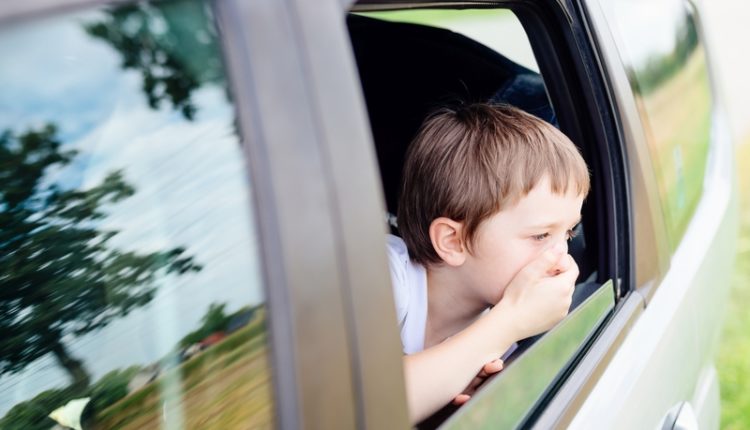When traveling with a child who suffers from travel sickness, trips in a car with kids can be tough. Motion sickness is a common ailment, but that’s little comfort when watching your child endure such unpleasant symptoms, like nausea, dizziness, and vomiting.
However, there are some effective strategies that you can try out to reduce the extent of travel sickness. Though it may not be possible to eliminate it in its entirety, these suggestions can offer relief and help you to manage your child’s condition better.
Travel Bands/Motion Sickness Bands
A most popular choice for travel sickness is travel/motion sickness bands, as these work utilizing acupressure. Offering a more natural form of relief, these bands alleviate the symptoms of nausea and vomiting and are backed up by an increasing amount of scientific research. A plastic stud on the inside of the band targets and stimulates acupressure points on the wrists, meaning nausea and vomiting are relieved.
Motion Sickness Chewable Tablets
A safe and sweet tasting option, children’s motion sickness tablets are pharmacy recommended when treating nausea, dizziness, and vomiting brought on through traveling. Best of all, these tablets can either be taken on the spot or around half an hour before setting off. The most popular choice of relief here is in the form of Dramamine.
Reducing Sensory Input
A common cause of travel sickness is sensory. This occurs when children focus on games, books, or electronics as they travel. The solution to this is simple enough. You can encourage your child to look out around them and focus on the scenery. Some children also benefit from traveling in the front seat of a car or vehicle, focusing on the horizon. Try putting on an audio-book or podcast as a means of diverting their attention here.
Getting Plenty of Fresh Air
Fresh air is a major distraction for children feeling ill when traveling. When you can, get them to sit outdoors as much as possible. When traveling in the car, leave the windows ajar so they feel cooler. Better yet, if you can, turn the air-conditioner on and keep the car as chilly as you can take it! It’s also a good idea to offer your child a cold cloth to place on their forehead to keep their temperature cool and stable when those feelings of sickness start to appear. This is good for when you can’t yet get out into the fresh air.
Eating Lightly and Limiting Sugary Treats
Though it’s good for a child to line their stomach before traveling, eating throughout the journey can often increase their symptoms. Therefore, avoid those sugary treats and stick to small snacks, ideally those with protein. Snack bars and crackers make better choices here as they are a dry and lighter choice. If you must include some sweet treats, opt for ones including ginger as studies have shown this to reduce the severity of nausea.
Breaking up Your Journey
As much as you practically can, consider breaking up your traveling time. So, if you’re traveling by car, put in place several stops where your child can get out and stretch their legs, taking in some fresh air. If your journey is by plane or boat, make sure they get up and move around whenever possible. Sometimes a change of scenery can take their mind off how they’re feeling.
Pre-Journey Solutions
It may take a bit of planning and pre-prep before heading off, but if you can actively work to reduce or perhaps prevent the possibility of your child’s symptoms, then this is time certainly well spent.
However, it’s also worth noting that many health experts believe this condition starts to lessen and, in some cases, even stop completely after the age of 12.
For more great health & parenting tips, check out the other blogs on Cyber Parent.

